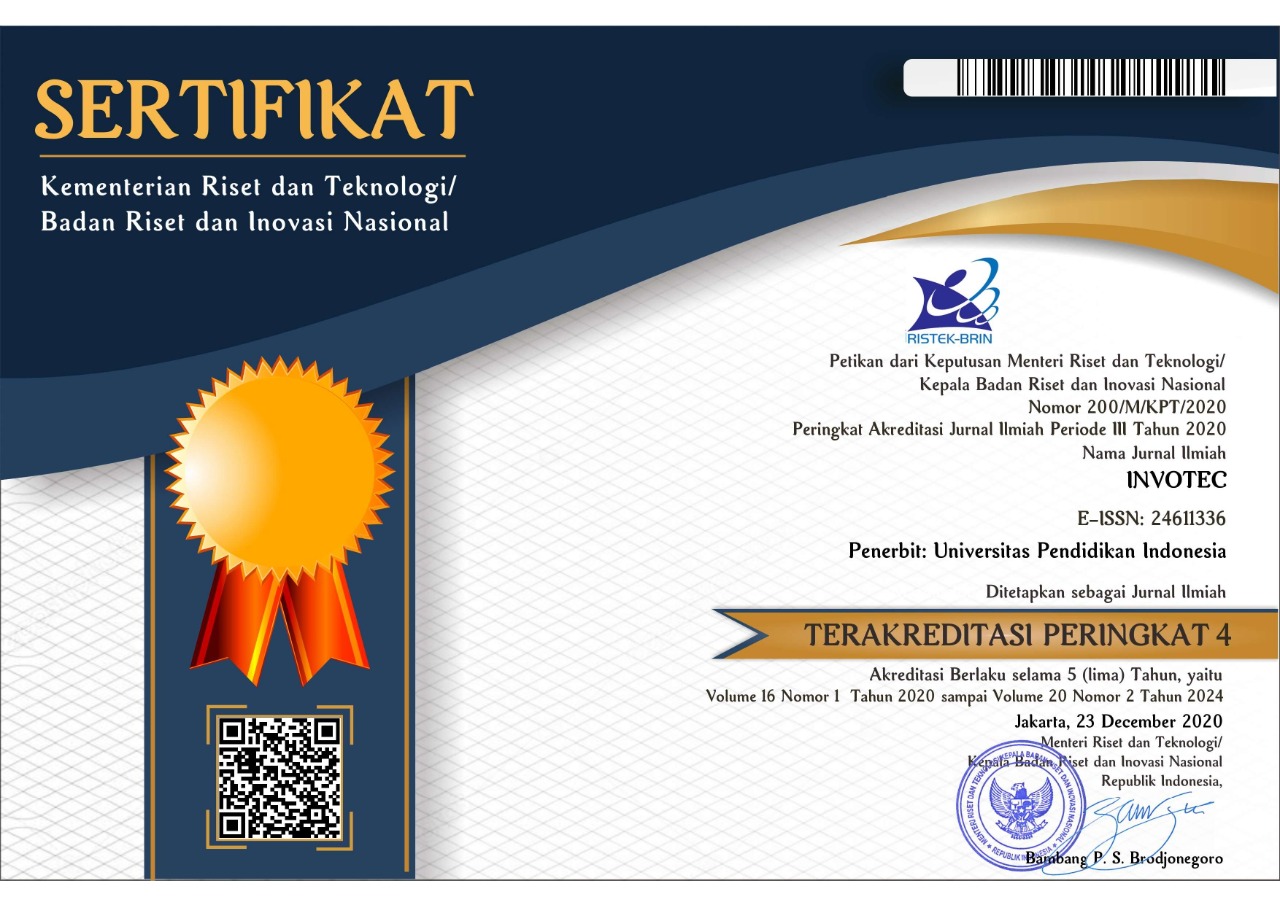Effect of Competency, Work Motivation, Industrial Work Experience and Facilities on the Readiness of Work for Senior High School Graduates in Electro Expertise Programs
Abstract
Keywords
Full Text:
PDFReferences
Ashley, B. and Fall, L. T. (2005). Using the port of entry report as a benchmark: Survey results of on the Job Training among Public Relations internship site managers. Public Relations Review, 31, 301-304.
Bakker, A. B., Schaufeli, W. B., Leiter, M. P., and Taris, T. W. (2008). Work engagement: An emerging concept in occupational health psychology. Work and Stress, 22(3), 187-200.
Berrin, B. (2008). Employability Competences of Vocational Secondary School Students. Eurasian Journal of Educational Research, 31,17-34.
Calhoon, C. C. and Finch, A. V. (1992). Vocational Education Concept and Operations. California: Wads Worth Publishing Company.
Calvo, R. and Amato, R. D. (2015). A Collaborative Method of Enhancing Internships Evaluation Throught Stakeholders Alignment. Procedia Engineering, 132, 167-174.
Craig. C., et. al. (2013). Making Economic Real: The Economic Internship. International Review of Economics Education, 13, 10-25.
Dahil, L., Karabulut, A. and Mutlu, İ. (2015). Reasons and Results of Non-applicability of Education Technology in Vocational and Technical Schools in Turkey. Procedia, Social and Behavioral Sciences, 176, 811–818.
James, A. W. and Vincent, R. J. (2005). Stratification, School Work Linkages and Vocational Education. Social Forces, 84(1), 257.
Jeong, S. Y. and Kevin, R. K. (2013). Cross Cultural Comparison of the Effects of Optimism, Intrinsic Motivation, and Family Relations on Vocational Identity. The Career Development Quarnerly, 61(2), 141.
Kartini, B. A. and Martono, S. (2016). Economic Education Analysis. Economic Education Analysis Journal, 5(1), pp.346–362.
Khalid, N. (2014). Importance of Soft Skills for Industrial Training Program: Employers’ Perspective. Asian Journal of Social Sciences and Humanies, 3(4).
Rainer, W. (1996), Employment Prospects and Skill Acquisition of Apprenticeship-Trained Workers in Germany. Industrial and Lanor Rekations Review, 49.
Smith, E. (2010). A Review of Twenty Years of Competency-Based Training in The Australian Vocational Education and Training System. International Journal of Training and Development 14(1).
DOI: https://doi.org/10.17509/invotec.v15i1.16045
Refbacks
- There are currently no refbacks.
Copyright (c) 2019 Innovation of Vocational Technology Education

This work is licensed under a Creative Commons Attribution-ShareAlike 4.0 International License.
This journal provides immediate open access to its content on the principle that making research freely available to the public supports a greater global exchange of knowledge.

This work is licensed under a Lisensi Creative Commons Atribusi-BerbagiSerupa 4.0 Internasional.


